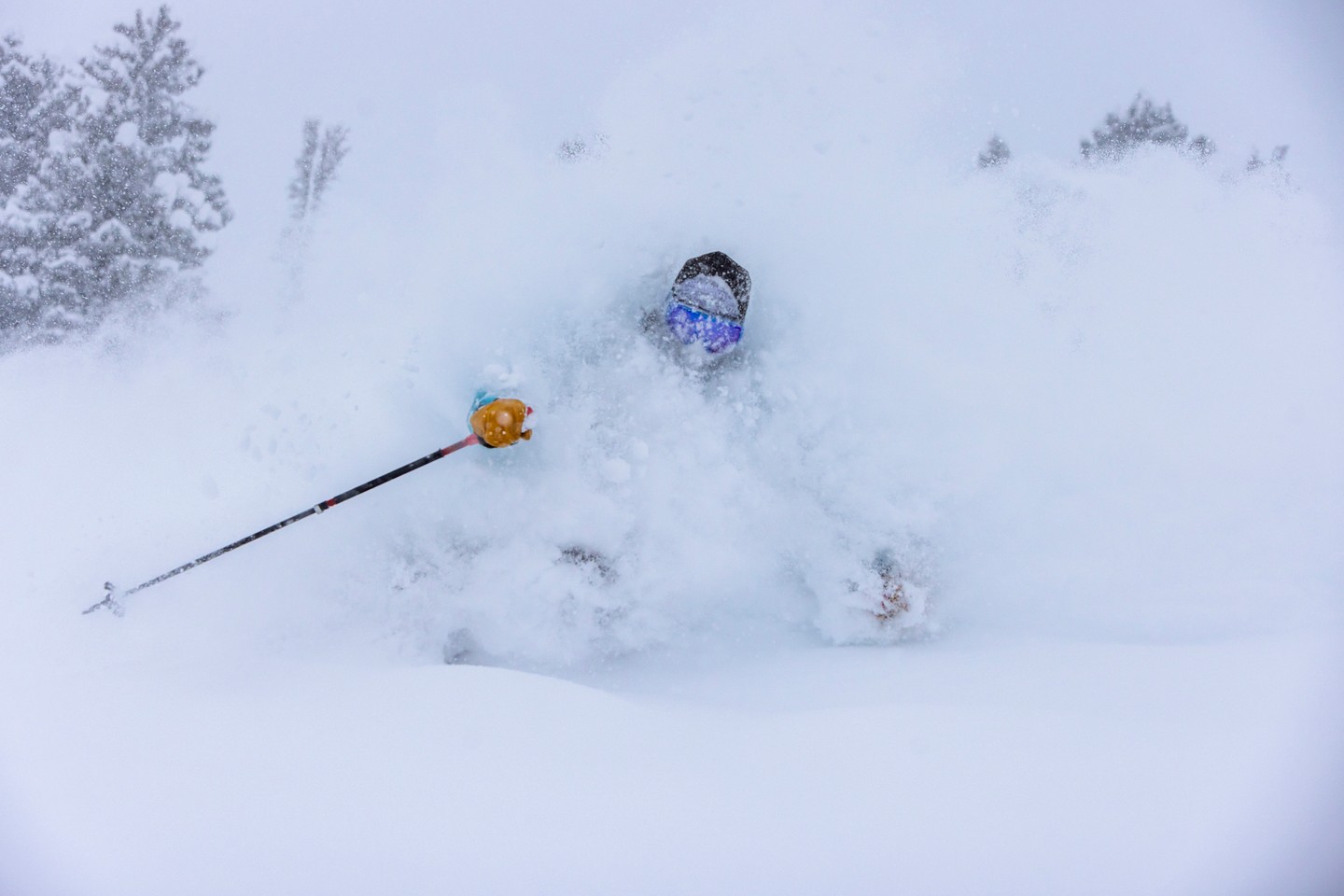
As North America braces for the winter of 2024-25, meteorologists looking at the snow forecast are turning their attention to the Pacific Ocean, where a weak La Niña is taking shape. This climatic phenomenon is expected to significantly influence weather patterns across the continent, particularly affecting snowfall distribution. According to Severe Weather Europe, the upcoming winter could bring a mix of snowy and dry conditions, depending on the region.
- Related: Farmers’ Almanac 2024-25 Winter Forecast: Cold, Wet, Snowy Winter Ahead…. But Where?
- Related: Median Dates for First Measurable Snowfall of the Year in North America
Check out Severe Weather Europe’s page for more in-depth analysis and graphics.
Tl;dr: For the winter of 2024/2025, above-average snowfall is expected in the northwestern United States and western Canada, while much of the southern and eastern United States, including the Northeast, are forecasted to experience below-average snowfall.
Understanding La Niña’s Role
La Niña is characterized by cooler-than-average sea surface temperatures in the central and eastern Pacific Ocean. This phase of the El Niño-Southern Oscillation (ENSO) typically alters atmospheric circulation patterns, leading to a stronger jet stream over North America. As a result, colder air masses are more likely to descend into the northern United States, increasing the likelihood of snowfall in certain areas.
Model Predictions: ECMWF vs. UKMO
Two prominent forecasting models, the European Centre for Medium-Range Weather Forecasts (ECMWF) and the United Kingdom Met Office (UKMO), provide insights into the potential snowfall patterns for the upcoming winter. While both models offer valuable predictions, they differ in some key areas.
- Related: Old Farmer’s Almanac Winter 2024-25 Forecast: A Calmer, Gentler Winter – Here’s Where it Will Snow
ECMWF Model Insights
The ECMWF model suggests varied snowfall outcomes across North America:
- Western U.S. and Canada: The northwestern United States and western Canada are expected to see above-average snowfall, particularly in January. This aligns with typical La Niña patterns, where the Pacific Northwest often experiences increased precipitation.
- Midwest and Northeast: Surprisingly, the model forecasts below-average snowfall for much of the Midwest and northeastern United States. This is unexpected, as these regions typically receive more snow during La Niña winters.
- Southern U.S.: Consistent with La Niña trends, the southern states will likely experience below-average snowfall, with warmer and drier conditions prevailing.
- Canada: Most of Canada is projected to have above-average snowfall, except for parts of the south and southeast.
UKMO Model Forecast
The UKMO model presents a slightly different picture:
- Northwestern U.S.: Like the ECMWF, this model predicts increased snowfall in the northwestern United States, reinforcing expectations of a snowy winter for states like Washington, Oregon, and Idaho.
- Upper Midwest and Great Lakes: The UKMO model forecasts above-average snowfall for the Upper Midwest and around the Great Lakes, aligning more closely with typical La Niña patterns.
- Northeastern U.S.: Both models surprisingly predict less snowfall than usual for the northeastern United States, which is atypical for a La Niña winter.
- Southern Canada: The UKMO model suggests below-average snowfall for southern parts of Canada, contrasting with the ECMWF’s prediction of increased snowfall across much of the country.
- Ohio River Basin: Uniquely, the UKMO model indicates potential above-average snowfall in the Ohio River Basin, a detail not highlighted in the ECMWF forecast.
Monthly Snowfall Patterns
The snow forecast patterns are expected to evolve throughout the winter season:
- November: Both models suggest increased snowfall in the western United States, likely at higher elevations. The UKMO model specifically points to potential above-average snowfall in the Ohio River Basin.
- December: The ECMWF model shows improvement in snowfall for the north-central United States and Upper Midwest. The UKMO model predicts increased snowfall around the Great Lakes and much of Canada.
- January: This month sees the strongest La Niña influence in both models. The ECMWF forecasts a significant area of above-normal snowfall in the west/northwest United States and Upper Midwest. The UKMO model reinforces this pattern and extends the area of increased snowfall further into the Midwest.
Conclusion and Considerations
While these forecasts provide valuable insights, they are based on data from mid-August and do not include predictions for February. As the La Niña event develops further, subsequent model runs may offer refined and potentially different forecasts.
The discrepancy between the models regarding snowfall in the northeastern United States is particularly intriguing. Typically, La Niña winters bring increased snowfall to this region, but both models currently predict below-average snowfall. This unexpected forecast warrants close monitoring as the winter season approaches.
For winter sports enthusiasts and the tourism industry, predictions of increased snowfall in the western United States and parts of the Midwest could signal a promising season. Conversely, the potential for less snowfall in the Northeast might pose challenges for ski resorts and winter-dependent businesses in that region.
As we approach the winter months, meteorologists will continue to refine these predictions. The strength and persistence of the La Niña pattern will play a crucial role in determining the actual snowfall distribution across North America.